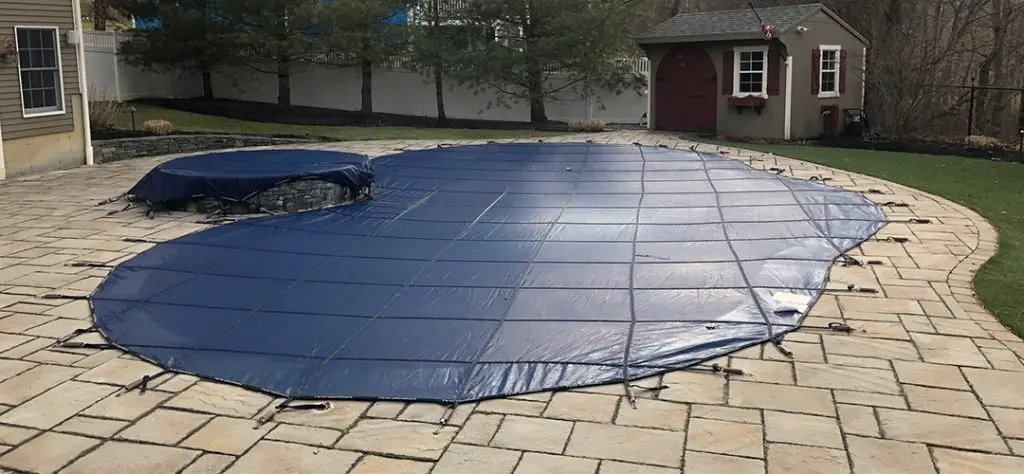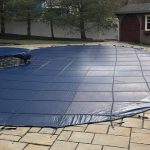As the summer season comes to an end, it’s time to start thinking about closing your swimming pool. Properly closing your pool not only helps to protect it from damage during the winter months but also ensures that it will be ready to go when the next swimming season rolls around. In this article, we will provide you with a step-by-step guide on how to close a swimming pool.
Step 1: Clean the Pool
Before you begin the closing process, it’s important to thoroughly clean the pool. Start by removing any debris such as leaves, twigs, and insects from the water. Use a skimmer net or a pool vacuum to clean the surface and bottom of the pool. Brush the walls and floor of the pool to get rid of any dirt or algae buildup. Finally, make sure to clean out the pool’s filter system to ensure proper functionality.
Step 2: Balance the Water Chemistry
Next, you’ll need to balance the water chemistry in your pool. Test the water using a pool testing kit to determine the pH, alkalinity, and chlorine levels. Adjust these levels as necessary to ensure that the water is properly balanced. This will help to prevent any damage to the pool’s surface and equipment during the winter months.
Step 3: Lower the Water Level
Lowering the water level in your pool is an important step in the closing process. Use a submersible pump or a pool cover pump to lower the water level to below the skimmer and return jets. This will help to prevent any damage to the plumbing lines and equipment due to freezing temperatures. Make sure to drain the water away from the pool to avoid any flooding issues.

Credit: m.homeyou.com

Credit: www.prestigepoolsandspas.com
Step 4: Winterize the Plumbing
Once the water level is lowered, it’s time to winterize the plumbing lines. Start by draining the water from the pool’s filter, pump, and heater. Remove any drain plugs and open all the valves to allow any remaining water to drain out. Blow out the plumbing lines using a shop vac or an air compressor to remove any water that may be trapped inside. This step is crucial in preventing any freeze damage to your pool’s equipment.
Step 5: Clean and Store Pool Accessories
Before closing your pool, make sure to clean and store any pool accessories such as ladders, diving boards, and pool toys. Thoroughly clean these items to remove any dirt or debris. Once cleaned, dry them completely to prevent any mold or mildew growth. Store these items in a dry and secure location to protect them from the winter elements.
Step 6: Cover the Pool
The final step in closing your swimming pool is to cover it. A pool cover is essential in protecting your pool from debris, leaves, and the harsh winter weather. Make sure to choose a cover that is specifically designed for your pool shape and size. Install the cover tightly and securely to prevent any unwanted entry and to ensure that it stays in place throughout the winter months.
Additional Tips
Here are a few additional tips to keep in mind when closing your swimming pool:
- Consider using a pool winterizing kit that includes chemicals specifically designed for the closing process. These kits often include algaecide and winterizing chemicals that help to keep your pool water clean and clear throughout the winter.
- If you live in an area with freezing temperatures, it’s a good idea to use a pool antifreeze solution. This helps to protect your pool’s plumbing lines from freezing and potential damage.
- Regularly check on your pool cover throughout the winter to ensure that it is still secure and in good condition. Remove any excess water or debris that may accumulate on the cover.
- Consider investing in a pool cover pump to automatically remove any water that accumulates on the cover. This will help to prevent the cover from sagging and potentially causing damage to your pool.
- When it’s time to open your pool in the spring, make sure to follow a proper pool opening procedure to ensure that your pool is clean, safe, and ready for swimming.
By following these steps and tips, you can effectively close your swimming pool and protect it during the winter months. Remember, proper pool maintenance and care are key to ensuring that your pool remains in good condition for years to come. Happy swimming!





